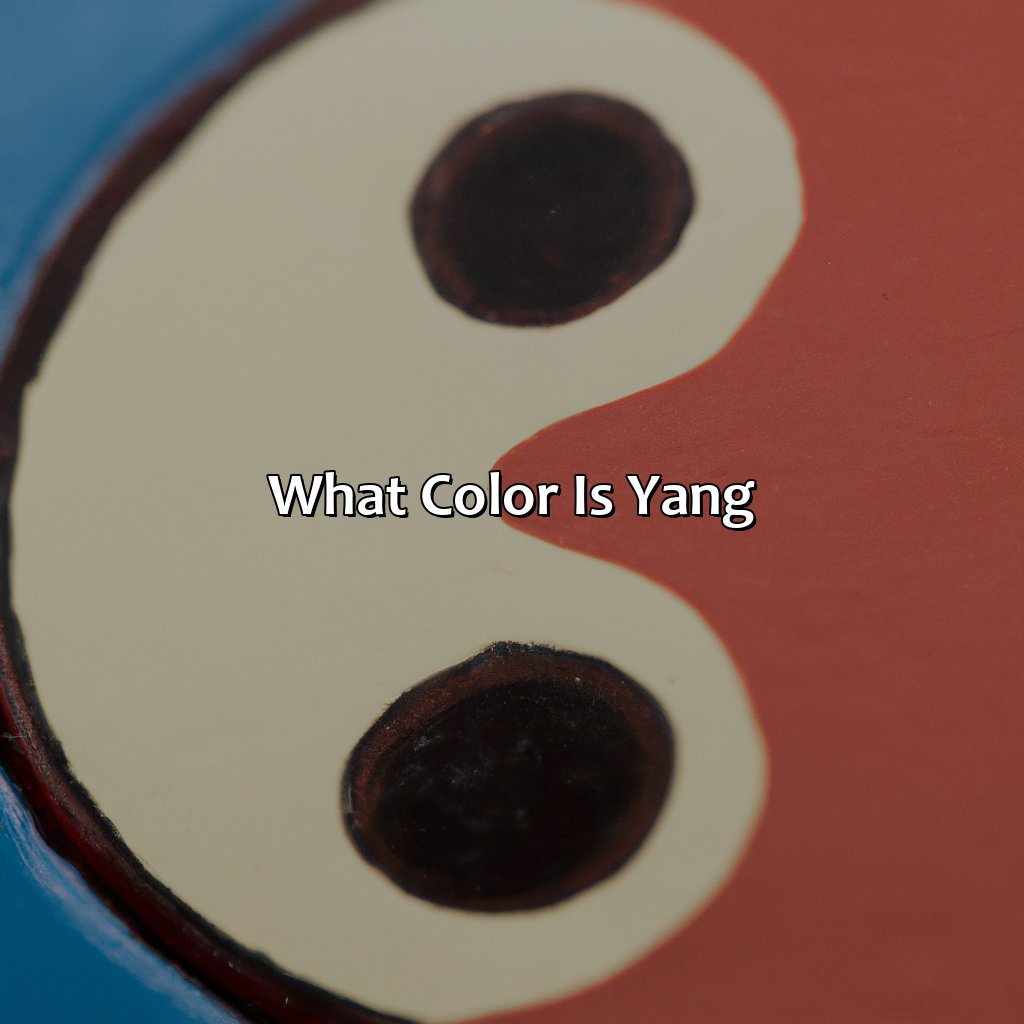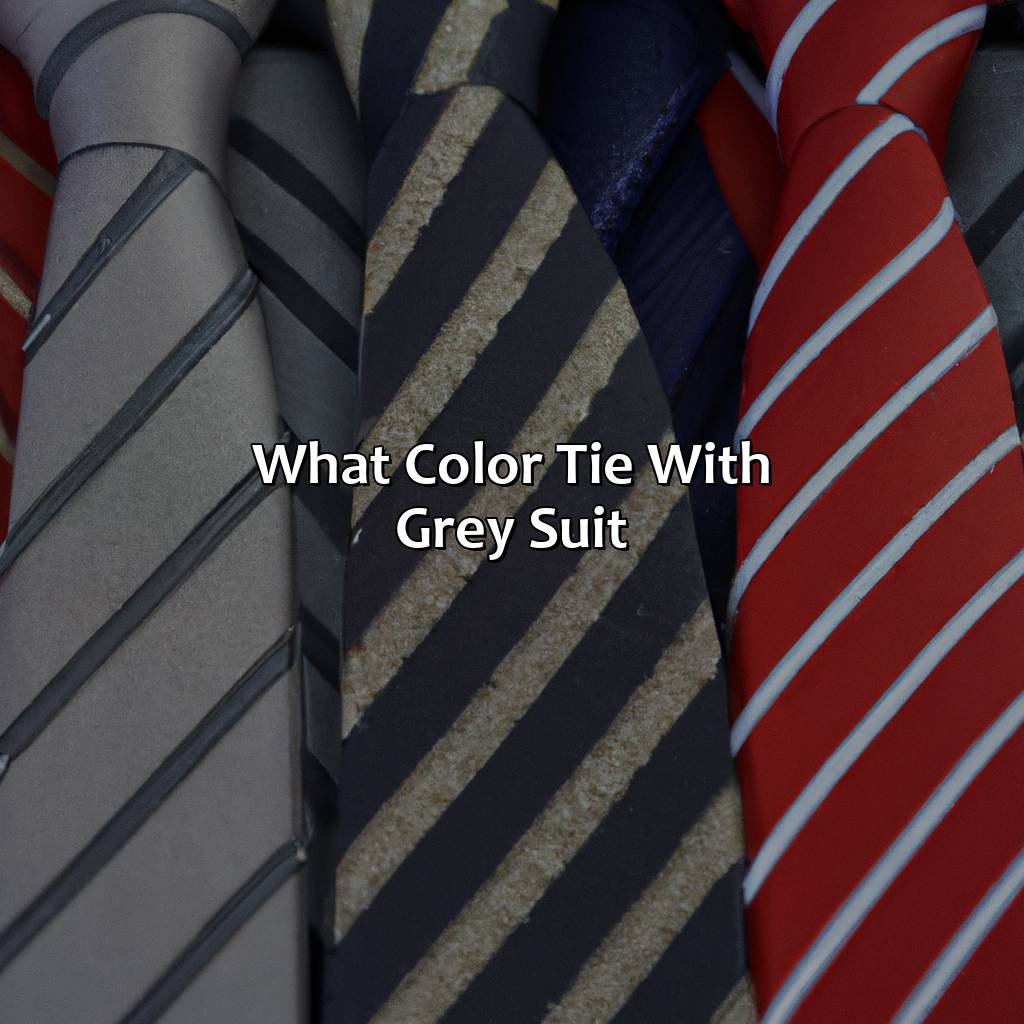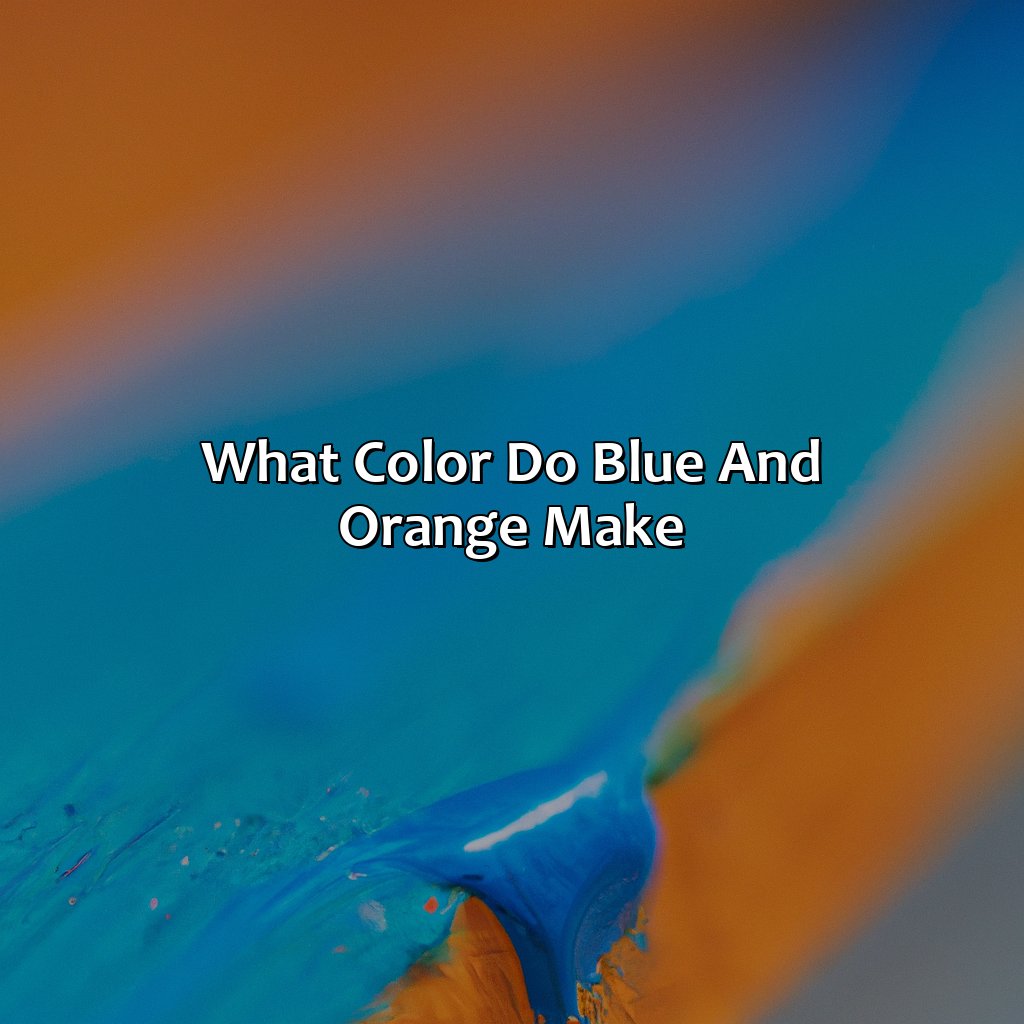Key Takeaway:
- Drab color is a neutral color that is usually associated with shades of brown, gray, beige, and other earth tones. It is often described as a boring, dull, lackluster, and lifeless color.
- Drab color has a long history of use in military uniforms, particularly during World War I and II. It is also commonly used in architecture, construction, and industrial design.
- The psychology of drab color is complex and can affect one’s mood and emotions differently depending on the context. For instance, drabness in art and literature can symbolize sadness, depression, and hopelessness, while in fashion and clothing, it can represent sophistication, elegance, and simplicity.
Definition of Drab Color
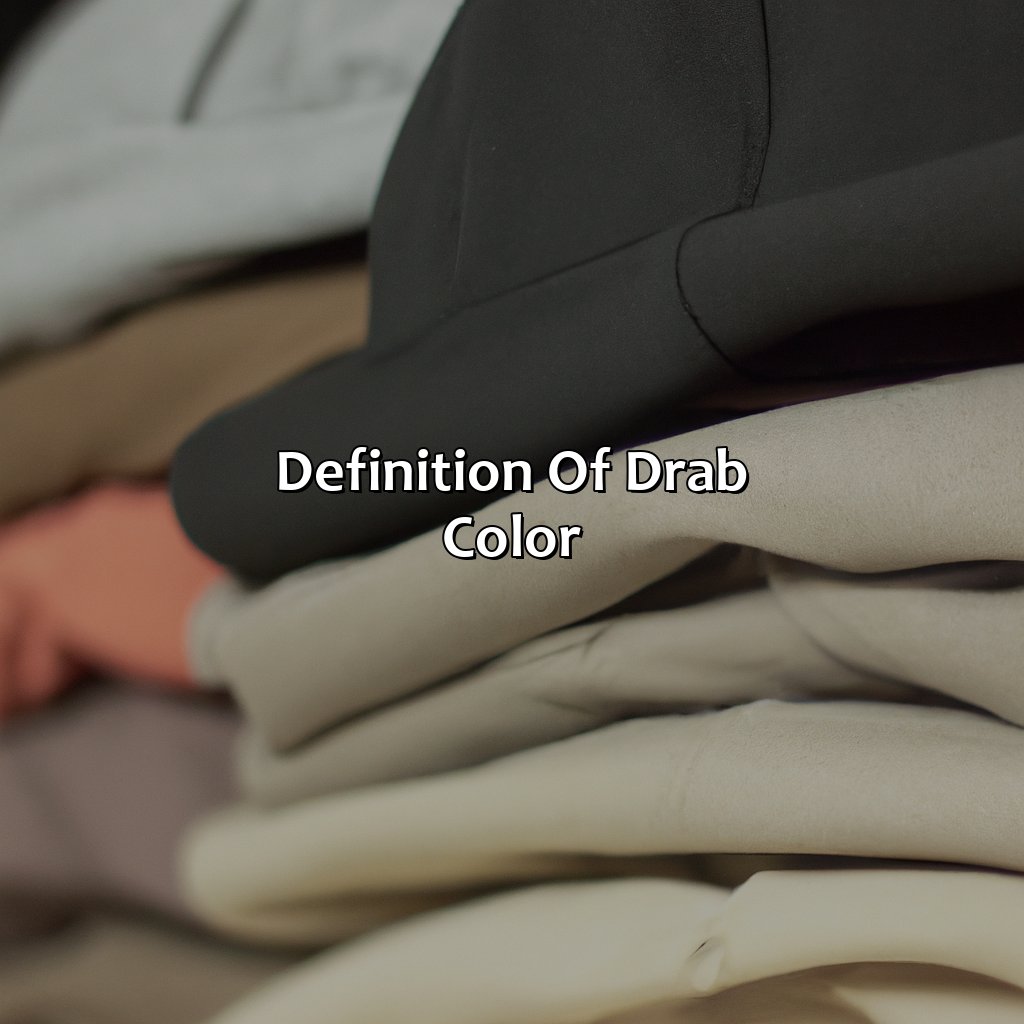
Photo Credits: colorscombo.com by William Roberts
To comprehend the shades of drab color, you must be aware of what it implies. Drab color is a neutral color and comes under earth tones. It relates to shades of brown, gray, and beige. This article section gives a thorough definition of drab color – with its synonyms. Along with this, we will discover the principles of color theory related to it. The section is split into two sub-sections. These sections will look into its origin and use, plus how it is seen in various cultures.
Understanding its Origin and Usage
Drab color has an intriguing history of usage and origin. Its subtle, dull-tone character can be traced back to the military uniforms worn by British soldiers during the 19th century. It then gained popularity in fashion and interior design industries during the mid-20th century. Drab color carries a unique perception in different cultures, some relating it to tradition and conservative values while others view it as dull and lifeless.
The use of drab color is characterized by its broad range of shades and variations. Its muted tone blends well with modern furniture, creating a chic appearance in living spaces. In fashion, drab works exceptionally well when paired with bold or bright colors, adding depth to any outfit. The psychology behind drab is linked to reliability and consistency but also evokes emotions of sadness or boredom.
Drab’s symbolism in art portrays melancholy or dreariness, while in literature, it relates to downtrodden individuals or economic depression. Societal perceptions suggest negativity towards both people and situations associated with drabness.
Different industries utilize variations of drab purposely for their association with practicality and reliability. The military and uniform industry employ varied shades for camouflage purposes. Architecture uses drab-colored structures for their neutral tone, blending well into surroundings without creating stark contrasts. Automotive industries use drab for their durability properties.
Colors that complement drab are muted tones like pastel green or blue; however, contrasting complementary colors such as red bring out the hue’s richness.
Drab color may be viewed as dull by some, but its varying symbolism and perception across cultures proves it’s not just a grey area.
How it is Perceived in Different Cultures
Different societies have diverse beliefs and perceptions when it comes to the drab color. The perception of drab shade varies culturally; for instance, in Western culture, drab is commonly applied as an adjective to describe dull and lifeless shades. However, neutral hues evoke calmness, silence and minimalism in Japanese aesthetics. In Indian literature, dull colors like drab represents detachment from materialism.
In cultures that associate certain emotions with colors, there are variations in how drab can symbolize mood or thought. For example, in Chinese art or culture, drab may be interpreted as a sign of wisdom or stability. Psychologically, people with color vision deficiency experience poor perception of neutral shades like drab; leading brands catering to these audiences need to test their products using suitable color charts before launching them.
To gather insights on how this common shade is perceived across various populations worldwide, researchers conduct perceptual experiments and tests related to color symbolism. It is also imperative for branding strategists and design artists to understand the cultural implications of integrating drab into logos and graphics.
Ultimately it could make all the difference between success and failure in building brand associations with target audiences across a wide range of industries.
Drab color: because sometimes you just want to blend in with the beige wallpaper.
Characteristics of Drab Color
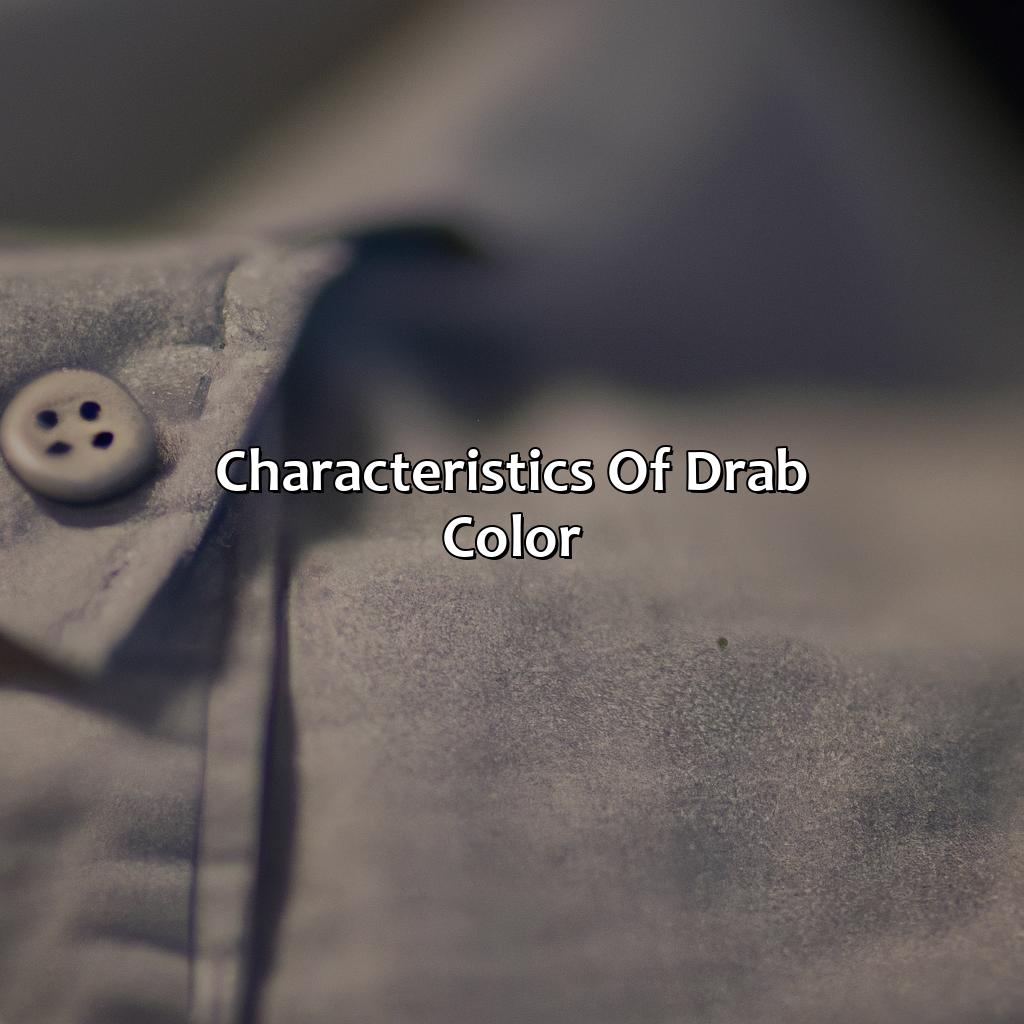
Photo Credits: colorscombo.com by Mason Wilson
To get what drab colors are, look into their shades. Brown, gray, and beige are common examples. In interior design, drab is used to make a relaxed atmosphere. Enhance the dull tones by using complementary, analogous, or monochromatic combos. Drab colors in fashion can be used to make a simple, carefree look. Complementary, analogous, and monochromatic mixes can give you a fashionable and stylish outfit.
Shades and Variations of Drab
Drab Color Variations Explained
Shades of brown, gray, and beige fall under the category of drab colors. Different shades and hues are used to create variations in these colors.
- Light Drab: softer and paler brown hues
- Warm Drab: reddish brown tones
- Cool Drab: blue-gray undertones
- Muted Drab: subdued tones with low saturation and brightness
- Dark Drab: deep and rich browns or grays
- Mixed Drabs: combinations of different drab shades to create unique color palettes.
Furthermore, these variations play a crucial role in interior design. For instance, warm drabs are ideal for creating a cozy atmosphere in living spaces while muted drabs can be used for creating subtle accents.
In addition, each variation invokes different emotions. For example, light drabs evoke feelings of calmness and elegance, while dark drabs suggest sophistication and mystery.
To make the best use of the variations while choosing clothing or styling oneself, one should consider their skin tone and body shape. Wearing muted drabs close to the face can flatter neutral skin tones while warm drabs complement warmer skin tones.
As society continues to evolve, so does the meaning behind colors. Thus, a better understanding of the various shades will allow us to explore new ways of using them creatively!
Drab may not be the most exciting color, but when used correctly in interior design it can create a sophisticated and timeless look.
How Drab is Used in Interior Design
Drab color has long been a popular choice in interior design due to its calming and neutral qualities. It adds warmth and depth to a space and can be used in a variety of ways, such as accent walls or upholstery. By pairing drab with complementary colors, such as shades of blue or green, you can create an elegant and sophisticated atmosphere. Using analogous colors, like muted yellows or purples, can add a pop of vibrancy without overpowering the room’s palette. Alternatively, subtle tonal shifts with monochromatic colors can enhance the natural lighting in a space while maintaining a cohesive and polished look.
Get ready to blend in with the crowd with a stylish and sophisticated drab outfit that’ll make you the epitome of nonchalance.
Choosing Drab in Fashion and Clothing
When it comes to fashion choices, selecting a drab outfit can bring both understated elegance and sophistication to the wearer. Drab clothes are often perceived as somber and subdued, but when chosen correctly, they can create a timeless and classic look.
Fashion colors play an essential role in choosing the perfect drab outfit. One should consider complementary colors such as warm browns or muted greens that combine well with drab shades like beige, taupe, grey, or khaki. Analogous colors like rust orange or olive green can add a pop of color while still maintaining the overall muted tone. Similarly, monochromatic colors are another option that works well with drab shades.
While considering color combinations is essential in fashion choices, it’s also crucial to think about the texture and fabric used in the clothing. Different fabrics have different textures, which give outfits their uniqueness. A sleek silk or slinky satin will surely provide a glamorous edge to your otherwise somber outfit.
Pro tip: Accessorizing your drab clothes with statement jewelry or unique shoes can be the game-changer element you need in completing your look.
Exploring the psychology of drab color, from its impact on mood and emotions to its symbolism in art and literature.
Psychology of Drab Color
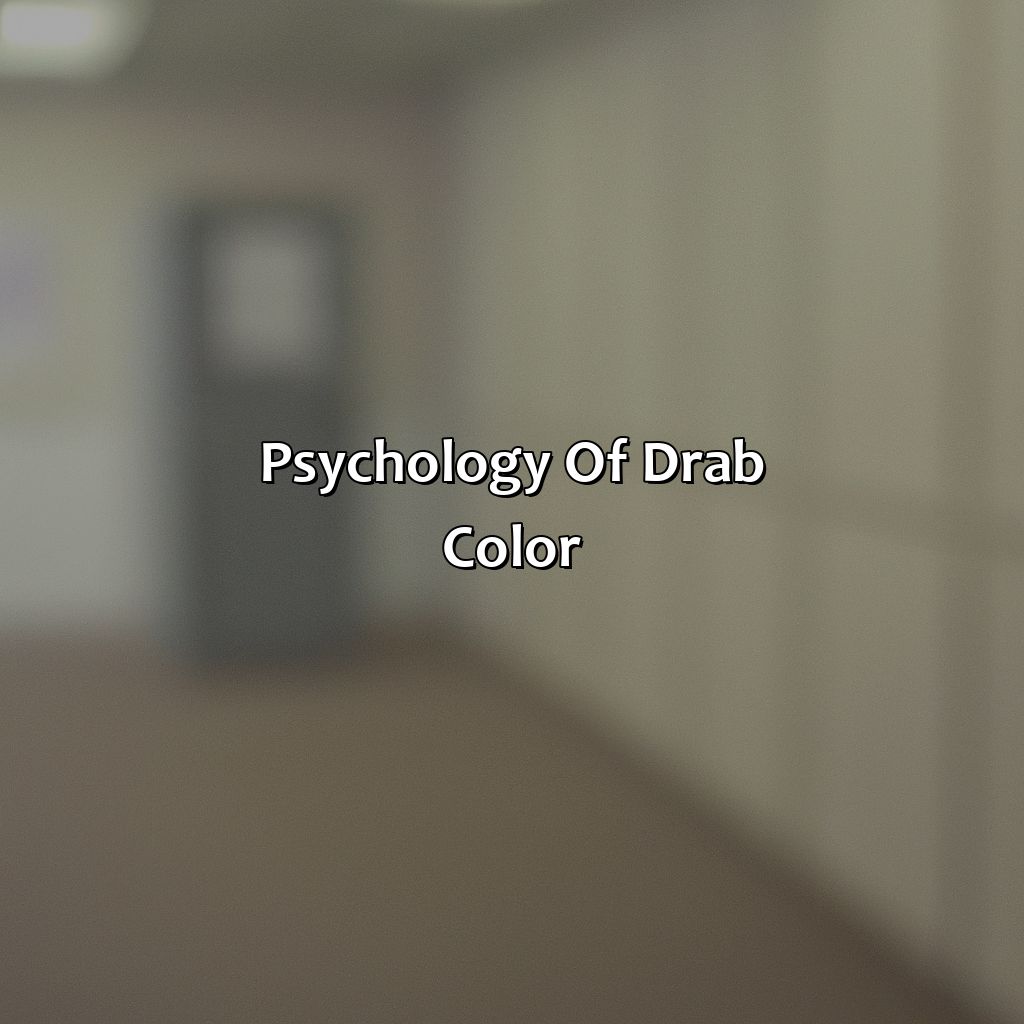
Photo Credits: colorscombo.com by Steven Baker
Grasp the psychology of drab colors and their effect on our feeling. Look at the parts about the symbolism of drab in art and literature. Uncover the effects drabness has on personality and emotions. Find out society’s opinions and links to drab colors, through experiments and tests on color perception.
How Drab Can Affect One’s Mood
Colors can have a significant impact on one’s emotions and behavior. Drabness, particularly, elicits feelings of dullness, boredom, and fatigue. It is even referred to as a “drab personality” in psychology. Color symbolism also plays a role in how drabness is perceived, where it often represents sadness, despair or monotony.
The use of drab colors in an interior design space can create an ambiance of calm and sophistication. However, excess use can reduce the interest and energy levels of the room’s occupants. In fashion and clothing choices, drab colors such as beige are commonly used as a neutral color choice that adds depth without too much distraction.
Moreover, when dealing with certain populations in society such as elderly people or those with depression or sadness issues – multiple studies show using brightly colored hues increases mood boosting effects significantly compared to others.
For instance – shifting towards warm-toned bright yellows from cool-hued blues could radiate psychological strength and resilience up to a certain extent.
Exploring the drabness in art and color symbolism, showing that even the most mundane shade can have deep meaning and significance.
Symbolism of Drab in Art and Literature
Drabness in art has a unique role in conveying mood and symbolism. Color symbolism is often utilized to express emotions, ideas, and messages in art and literature. In this context, the use of drab colors can connote feelings of loneliness, sadness, or even monotony. The dullness of this color range can symbolize a lack of excitement or emotion in a given scene or character.
Drabness in art can also represent themes such as poverty or despair and be used to communicate the struggles of individuals who have gone through difficult experiences. By using drab colors, artists can maintain a sense of realism while evoking visceral reactions from their viewers through color symbolism.
Unique details regarding the symbolism of drabness in art include its evolution over time based on shifts in artistic movements and cultural perspectives. One notable example is how modernist artists such as Giorgio Morandi used muted tones to convey a more introspective and meditative approach to creativity.
A true fact about Drabness in Art with regards to color symbolism would be that it was famously used by Vincent van Gogh in his painting The Potato Eaters which featured mostly brown, grey, and dark green tones to depict the harsh realities of peasant life. Even those with color blindness can see the societal associations of drab.
Perceptions and Associations of Drab in Society
Drab color perception varies among different cultures and societies. The color is often associated with dullness and unattractiveness. However, in certain cultures, drab colors are considered sophisticated and classic. In experiments related to color perception, it shows that individuals with visual impairments or color blindness may struggle to differentiate drab colors from other hues. These findings are pertinent for businesses that rely on effective marketing campaigns, as understanding how people perceive colors can have a significant impact on the decision-making process.
Furthermore, despite its negative connotations, drab has found its place in various industries such as architecture and military uniforms. The color’s subdued nature complements other more vibrant tones or allows the design elements to stand out uniquely. Moreover, many automobile makers use shades of drab for their car exteriors due to being perceived as dependable and practical by consumers.
Pro Tip: It is essential not to underestimate the impact of color vision in day-to-day life as it influences our emotions and reactions significantly. Knowing what effect different colors have will provide an edge while designing a campaign or developing products. Utilizing color perception tests can help businesses evaluate branding decisions more precisely.
Why settle for plain when you can have drab in your military, architecture, and fashion?
Variations of Drab in Different Industries

Photo Credits: colorscombo.com by Benjamin Rodriguez
We have split drab into three categories to investigate how it is used in various industries. These are: military/uniforms, architecture/construction, and automotive/industrial design. By studying its use in different contexts, we can get a deeper comprehension of this sometimes disregarded hue and its importance.
Drab in Military and Uniforms
Military and uniforms often incorporate drab colors in their design, serving a functional purpose rather than an aesthetic one. Drab hues like olive green, beige, or khaki allow soldiers to blend with the environment and provide camouflage from potential threats. Moreover, drab uniforms provide a sense of unity and solidarity among military personnel.
In the context of military clothing, drab shades often imply functionality over style. It is essential to choose materials that are durable and resistant to harsh weather conditions. Materials like ripstop nylon or Cordura are ideal for making military uniforms. The main aim of designing military clothing is to ensure safety and comfort on the battlefield.
Drab colors play an important role in distinguishing different ranks within the military hierarchy. Officers often wear brighter colored patches, while regular soldiers wear plain drab uniforms. Similarly, ranking stripes on shoulders or chest are also colored differently based on their rank.
Pro Tip: When choosing drab clothing for adventure activities, opt for materials that dry quickly and are breathable. This ensures sweat absorption and keeps you comfortable during prolonged outdoor sessions.
Drab may be boring to some, but in architecture and construction it can create a sense of stability and durability.
Drab in Architecture and Construction
Drab in Architectural and Construction Designs
Drab color appears to play a significant role in contemporary architectural projects, ranging from commercial offices to residential buildings. The primary application of drab in architecture is for accentuating individual elements such as doors, trims or railings. Drab creates a pleasant contrast with brighter shades, thereby bringing a relaxing touch into the overall design. In construction works, drab often dominates the external paint schemes of brick buildings that need to embody resilience and practicality.
Drab’s distinctiveness lies not only in its physical character but also how it matches the texture of drywall applications, making it an ideal choice for interior walls and ceilings with an industrial feel. Additionally, drab color blends in perfectly with the contemporary urban environment, which is why it is commonly used by architects who aim at creating timeless designs that can withstand changing aesthetics throughout different eras.
Designers use drab because it can highlight a building’s organic form without overwhelming its visual appeal. Its muted hue makes subtle appearances that do not take away from other colors’ beauty or distract from other elements within the design framework. Instead of using glossy red cladding material for an office building, for example, the architect could opt to paint the masonry facade drab while having contrasting pieces on multiple layers featuring shades of white or off-white.
It’s worth noting that applying too much drab color to one project can affect its vibrancy level and dullness significantly. Overuse of this hue can create a bleak atmosphere that negatively affects people’s mood when they visit architectural sites or stay within spaces possessing this feature.
As per industry experts’ opinions working closely alongside experienced builders and contractors provides valuable insight into designing with drab color concepts while being mindful of how it interacts with specific materials during construction or renovations. This approach can help mitigate avoidable mistakes down the line and ensure excellence in custom designs while keeping one foot grounded within tried-and-true building specifications.
No colorful commentary needed here – drab and utilitarian is the name of the game in automotive and industrial design.
Drab in Automotive and Industrial Design
Automotive and industrial design often incorporate drab colors as they evoke a sense of durability and practicality. This color is also used to emphasize the purpose for which the product or vehicle was designed, making it an excellent choice for items that are intended for heavy use.
Drab in automotive and industrial design typically includes earthy tones, such as greens, browns, and grays. These colors can be found on machinery, vehicles, appliances, and other utilitarian objects. The use of drab color in these designs is beneficial as it hides dirt and wear and adds a layer of sophistication to the overall aesthetic.
In addition to the practicality aspect of incorporating drab in automotive and industrial design, there are psychological benefits too. Drab can give off a sense of strength and masculinity which is suited well for machinery or vehicles that need to strike a powerful impression.
To incorporate drab in products like cars or machinery designers should experiment with different shades to create visual depth. Darker shades can give off an impression of ruggedness while lighter shades tend to be more subdued yet refined appearance. It’s essential when integrating these colors into a product, designers must also consider how other complementary colors will work alongside them to form a cohesive design.
Finding the right color combination for drab can be a task, but opposite colors attract and complement each other best.
Color Combinations and Contrast with Drab
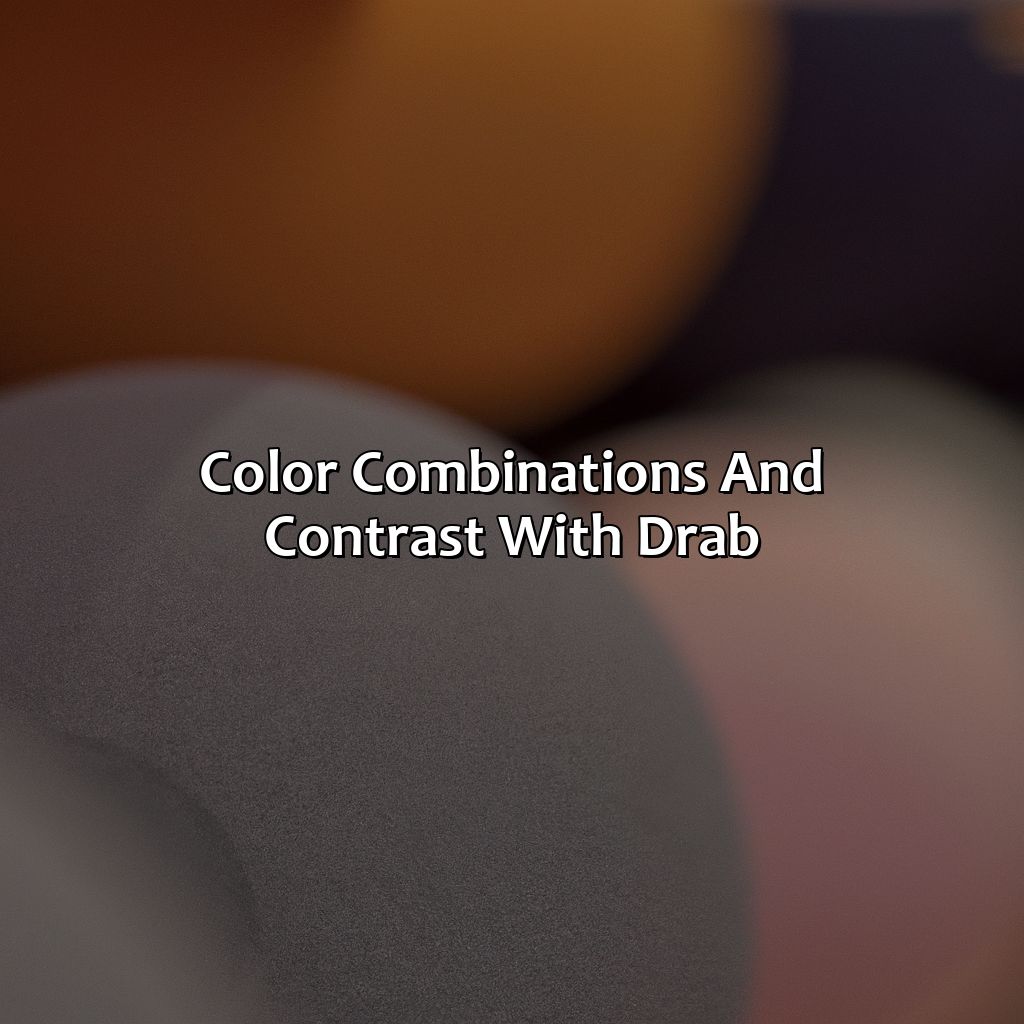
Photo Credits: colorscombo.com by Jordan Lopez
To master the art of combinations and contrasts, you need to know which hues enhance and detract from drab. You can pair this muted color with analogous and monochromatic colors. Or, opt for warm or cool colors for a striking contrast.
This section is split into two sub-sections: “Colors That Complement Drab” and “Colors That Contrast With Drab“. These subsections explain these concepts more thoroughly.
Colors that Complement Drab
Colors that perfectly match with dull and lifeless drab are complementary colors, analogous colors, and monochromatic colors. Complementary colors like rusty orange, deep greens, and earthy browns add interest and depth to a muted palette of drab. By placing contrasting hues against dreary shades, you can create an exciting visual experience in your room or outfit. Analogous colors include dull green, brownish-reds and yellow-orange that bring harmony to the décor without being overbearing. Monochromatic schemes feature various shades of the same color that blend together beautifully with drab accents of beige and gray.
Unique details about drab’s complementing colors highlight its flexible nature for use in several contexts. For example, combining neutral accessories such as beige cushions or blackout curtains against walls painted in light green helps to focus on other textures within the space without distracting from them. In fashion design, prints with subdued tones of purple or blue-green can effortlessly enhance a relaxed yet chic look by pairing them with matching-toned footwear.
A true fact is researchers at Tulane University have noted that individuals exposed to cool-colored rooms feel more docile and lethargic than those exposed to warmer tones like reds or oranges.
Drab may be dull, but paired with the right warm or cool colors, it can create a mesmerizing contrast in any setting.
Colors that Contrast with Drab
Warm and cool colors can contrast with drab to create an intriguing color palette. The right contrast can make a room or outfit look more vibrant and interesting. Using warm colors like red, orange, and yellow can add warmth to the cooler shades of gray or green that make up drab colors. Cool colors like blue, purple, and green can complement the browns in drab, providing depth and contrast. Color contrast plays a critical role in creating eye-catching designs for fashion, interiors, and graphic design.
Whether you love it or hate it, one thing’s for sure – drab color isn’t going anywhere anytime soon.
Summary of Drab Color
Drab color is a neutral, dull tone that is often used in various fields. The shades and variations of drab are often used in interior design, fashion, literature, and art. Its psychology can affect one’s mood depending on how it’s perceived in society. Drab is commonly used in the military as well as architecture and construction. The color combinations that complement drab are earthy tones such as brown and beige while dark blue or green provide bold contrast.
Pro Tip: Incorporating different textures with drab colors can bring depth to designs.
Final Thoughts on its Significance and Use
The Relevance of Drabness: Significance and Uses of Drab Colors. In color psychology, drab colors can be associated with boredom and lack of excitement. However, when used strategically, they can evoke a sense of calmness and stability in interior design and fashion. Moreover, drab colors have been used in military uniforms to create a subdued appearance while providing camouflage. Thus, drabness is significant in various fields to convey certain moods or messages.
Drab colors are perceived differently across cultures. While Western cultures may associate it with a lack of color, Eastern cultures may perceive it as a symbol of humility and modesty. In fashion and clothing, combining drab colors with contrasting hues can create interesting color combinations that attract attention without being too bold.
One unique detail is the role of drab colors in color vision deficiencies like protanopia or deuteranopia. Individuals with these deficiencies will struggle to differentiate between different shades of reds and greens but may perceive drab colors more vividly than other shades.
In the automotive industry, drab metallic finishes are becoming popular for their understated elegance while still capturing attention on the road. Here’s an example – a leading automaker recently introduced an entire lineup solely in different shades of grey, catering to buyers who desire simplicity and timeless style.
Five Facts About What Color Is Drab:
- ✅ Drab is a dull, dreary, and uninteresting color that is commonly associated with military uniforms and camouflage. (Source: Encyclopedia Britannica)
- ✅ The color drab is often described as a mix between brown, gray, and green. (Source: Color Meanings)
- ✅ The use of drab color in fashion and design has become increasingly popular, with many designers incorporating it into their collections. (Source: Fashion United)
- ✅ Drab was originally used as a term to describe unbleached and undyed fabric. (Source: The Spruce Crafts)
- ✅ The color drab is often associated with depression and sadness due to its dull and uninteresting nature. (Source: Verywell Mind)
FAQs about What Color Is Drab
What color is drab?
Drab is a dull, muted, or faded brownish-grey color.
Is drab a popular color?
Drab is not typically considered a popular color choice, as it is often associated with being unattractive or boring.
Where did the term “drab” come from?
The term “drab” originates from the Old French word “drap,” meaning cloth or fabric. It was later used to describe a dull or faded shade of brownish-grey, often used in military clothing during the World Wars.
What are some synonyms for the color drab?
Some synonyms for the color drab include dull, faded, muted, somber, and unexciting.
Can drab be used as a neutral color?
Yes, drab can be used as a neutral color in various contexts, particularly in interior design and fashion. It can help to balance out vibrant or bold colors and provide a calming effect.
What are some examples of drab colors?
Some examples of drab colors include beige, taupe, khaki, and olive green.



